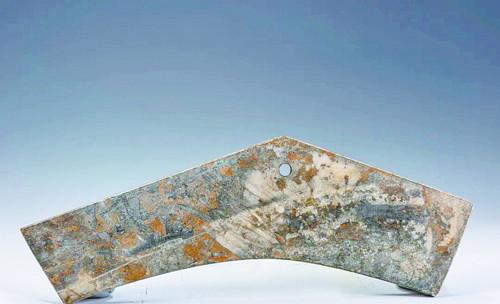Recently, the location of the tomb of Emperor Liu Heng of the Han Dynasty was determined, setting off a new round of attention to the study of Han tombs. On the banks of the Yellow River, south of Jishui, Qilu culture meets here. Over the years, archaeologists have discovered and excavated a number of princely tombs in the Jinan area, such as the Luozhuang Han Tomb, the Weishan Han Tomb, the Shuangniushan Han Tomb, the Dajue Temple Han Tomb and the Lashan Han Tomb. Through the cultural relics excavated from these tombs, we can get a glimpse of the luxurious life of the princes of the Han Dynasty.

Luozhuang Han Tomb is located in Zhangqiu District, Jinan City, since the excavation began in June 1999, a total of 36 funerary pits and sacrifice pits have been found, and more than 3,000 precious cultural relics of various kinds have been excavated. In particular, the discovery of 19 chimes, 6 groups of 107 chimes and 3 large carriages has aroused widespread concern in society and high attention from the archaeological community. The variety of cultural relics unearthed, the exquisite shape of the utensils, and the well-preserved are second to none among the han tombs of the same type, and it was listed as one of the top ten new archaeological discoveries in China in 2000. According to experts, the owner of the tomb was Lü Tai, the nephew of Lü Hou in the early Western Han Dynasty and the king of lü.
In the Han Dynasty, the concept of death as if it were a matter of life was popular, and the princes enjoyed a luxurious life before they died, and in order to ensure that all their needs could be met after death, they spared no expense when building the cemetery. The architectural structure of the cemetery is based on the layout of the hall, and the funeral objects are arranged in an orderly manner, including daily living, feasting, drinking, cooking, carriage and horse travel, ceremonial weapons, and even toiletries. All the beauty enjoyed by the princes before they died was prepared after death, which fully reflected the concept of thick burial in the Han Dynasty.
The most eye-catching thing about the Luozhuang Han Tomb is the musical instruments excavated from the No. 14 funerary pit, including a set of 19 well-preserved and beautiful two-tone chimes, 107 pieces of 6 groups of stone chimes, and more than 140 musical instruments such as Zhenyu, Ser, Plutonium, Jian drum and brass bell, which can be called the Grand View of Han Dynasty Musical Instruments. It is not only the first dedicated musical instrument sacrifice pit found in archaeological excavations, but also the number of excavated chimes exceeds the sum of the practical chimes found in the previous Han Dynasty archaeologies in China.
"Chimes, musical instruments also; jade or stone, their shape is like a moment." The choreography is one of the ancient percussion instruments in China, mostly used for court music or grand festivals. Hanging a set of chimes with different pitches on a wooden frame, using small wooden mallets to beat the music, the sound is long and clear, smelling like falling into a dream. According to the appraisal of experts, the chimes excavated from the Luozhuang Han Tomb are well preserved and have a moving sound quality, and famous songs such as "Yangguan Three Stacks" and "Jasmine" can still be played, which is enough to amaze today's people.
This batch of compilations is of particular significance to the study of the music system of the Han Dynasty, which is very poor in data, and provides rich physical materials for the study of the development and evolution of musical instruments from the pre-Qin to the Han Dynasty and the ritual music system of the early Han Dynasty. In addition, the discovery of 8 small spherical brass bells and gongyu, tung and duo provides extremely important physical information for further understanding the early Han Dynasty instrumental performance combinations.
It is a percussion instrument in China's ancient bronze army, often used in conjunction with drums, and used to command advances and retreats in war. The upper part of the hammer is completely round, with a ring button at the top, a slight inward contraction in the middle, a slightly open lower mouth, and a slightly oval section. The piece excavated from the tomb of Luozhuang Han is decorated with a relief eagle pattern on both sides, and the eagle is a "stroke painting", which is very rare.
The excavation of Cersei and Thur has given us a more comprehensive understanding of one of the oldest plucked stringed instruments in China, the Thur. It has been widely popular since the Western Zhou Dynasty, and its prevalence in the Central Plains countries during the Eastern Zhou Dynasty made it almost an indispensable instrument for the nobles to cultivate themselves. The string tie set at the end of the serpent is called the "Sergeant". The number of Sergeants ranged from 2 in the Spring and Autumn Period to 4 in the Warring States Period. A total of 7 pieces of copper sergeants were excavated from the Luozhuang Han Tomb, the fir hat was gilded throughout, decorated with a high relief deformed dragon pattern, the dragon head was centered, and the top periphery was decorated with petal patterns, which was exquisite to the extreme. The Cersei are paired with the Serkkey to tune the strings, and the excavated Cersei grooves have traces of winding the strings, which is enough to prove that it is not a ming instrument.
Instruments spanning thousands of years are quietly presented to the world, they seem to have fallen asleep, they have long forgotten the glory of the past behind them, but they are still intact, waiting for the arrival of the musicians at any time, playing a majestic and magnificent song. (Reporting by Zhang Yimeng, client reporter of Dazhong Daily)